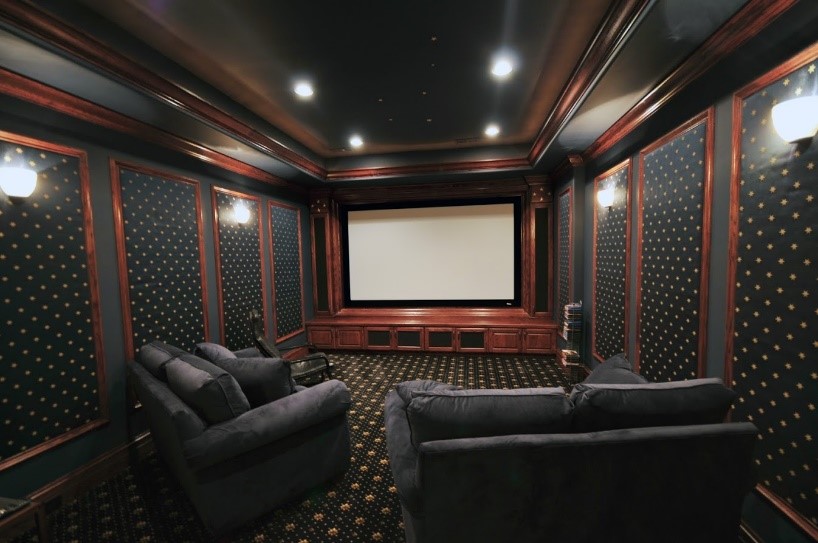Want a Media Room? 4 Key Elements to Look For

A well-planned media room adds to the value of your home and creates a space the whole family will love to use. But designing the right media space calls for more than simply placing a giant TV on a wall.
What should you look for in your media room? Here are some of the key features that will add the most benefits.
Size
The most basic requirement for all media rooms and home theaters is a sufficiently big space. Start space planning by identifying how you want to use the media room in general. Do you want to design a home theater, or will the room be used for video games, snack-making, or even cocktails?
The more activities you plan for, the larger it will need to be. If you want to be able to entertain larger groups, you’ll need more space as well.
At a minimum, you will probably want a space that’s around 12 feet by 12 feet. This allows enough room for a large television or projector screen and provides space for the audience to move around comfortably. If your space is smaller, consider scaling down your objectives, perhaps by designing a gaming zone instead.
Shape
Few homeowners understand the value of having the right shape of room. However, for home media purposes, you should try to aim for a rectangular room that’s longer than it is wide. The reason is that square shapes can often create issues with the acoustics once you install a surround sound system.
Determine where the best location for the main screen (or screens) is, and then plan your rectangle outward from there. If the room was originally square, consider adding some interior walls — perhaps creating a storage closet or small bathroom — to make it more rectangular.
Location
Many times, your choice of location is limited by how you’re already using the house. But the best locations for a home theater are those that are away from the sleeping areas of the house. That way, you can amp up the sound and fun without bothering the rest of the household. If you want to convert an unused bedroom, choose the one that’s farthest away from the other bedrooms.
Basements and garages are also perennially popular choices because they’re naturally isolated from the rest of the house and offer good insulation options to reduce noise pollution. If you have a large multipurpose or family room, add a wall with good insulation and repurpose it. And if you still can’t find the right spot, consider adding a room specifically designed for entertainment.
Environment
If you want to create an immersive experience, you’ll need the right acoustics. Include plenty of sound-absorbing fabrics like carpeting and draperies.
Make sure you’re able to wire in a surround sound system, featuring at least two speakers near the front section of the audience and two speakers in the rear corners. For the best results, consider getting a professional assessment of the room’s acoustics before wiring.
In addition, learn if the light in the room can be controlled well enough for a cinematic experience. Since most bedrooms and family rooms generally feature at least one exterior window or door, start by blocking out that light. Room-darkening window treatments or motorized shades can be very useful. You can also use a piece of foam the size of the window to black it out entirely.
Then, add a lighting system that allows you to dim the lights to different levels for different activities as well as including task lighting in certain areas.
Not sure where the best place is to integrate a media room into your home? At A Tech, our experts can help you design the best layout and location possible. Call today to make an appointment.
